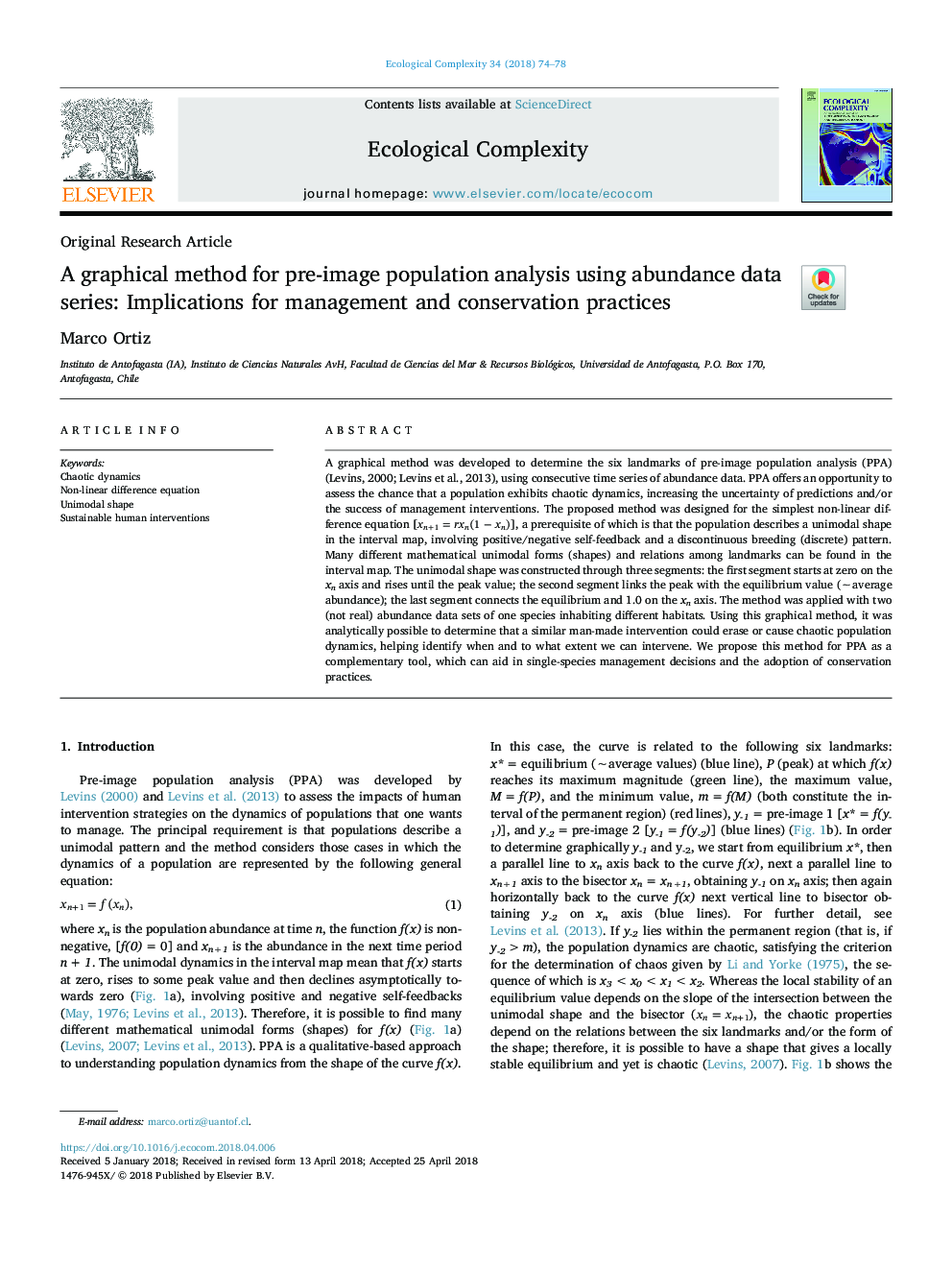| Article ID | Journal | Published Year | Pages | File Type |
|---|---|---|---|---|
| 8844820 | Ecological Complexity | 2018 | 5 Pages |
Abstract
A graphical method was developed to determine the six landmarks of pre-image population analysis (PPA) (Levins, 2000; Levins et al., 2013), using consecutive time series of abundance data. PPA offers an opportunity to assess the chance that a population exhibits chaotic dynamics, increasing the uncertainty of predictions and/or the success of management interventions. The proposed method was designed for the simplest non-linear difference equation [xn+1=rxn(1âxn)], a prerequisite of which is that the population describes a unimodal shape in the interval map, involving positive/negative self-feedback and a discontinuous breeding (discrete) pattern. Many different mathematical unimodal forms (shapes) and relations among landmarks can be found in the interval map. The unimodal shape was constructed through three segments: the first segment starts at zero on the xn axis and rises until the peak value; the second segment links the peak with the equilibrium value (â¼average abundance); the last segment connects the equilibrium and 1.0 on the xn axis. The method was applied with two (not real) abundance data sets of one species inhabiting different habitats. Using this graphical method, it was analytically possible to determine that a similar man-made intervention could erase or cause chaotic population dynamics, helping identify when and to what extent we can intervene. We propose this method for PPA as a complementary tool, which can aid in single-species management decisions and the adoption of conservation practices.
Keywords
Related Topics
Life Sciences
Agricultural and Biological Sciences
Ecology, Evolution, Behavior and Systematics
Authors
Marco Ortiz,
